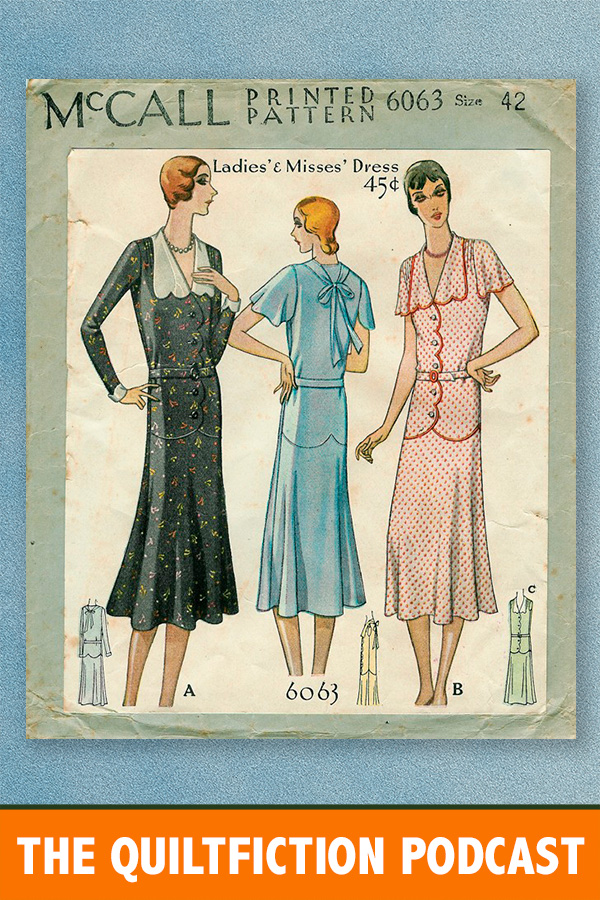For the Bee’s second meeting, we venture to Florence’s Tudor home on Walnut Street. One of the most enjoyable things about writing fiction is that I get to put my characters into houses and decorate for them. I love old Tudors and Victorians. I hope that one day Florence will be able to get rid some of her mother’s old Edwardian furniture and modernize her home to her heart’s content.

In this episode, Eula wears a dress she thought was more than nice enough — until she walks into Florence’s fancy digs. It’s a dress she made herself, and of course I had to go looking for a pattern that looked like a dress Eula — and Dorothy, who turns out has made the same dress — would make. To be honest, this dress seems a touch on the fancy side, but it’s hard to find patterns for dresses sensible farm women might wear!
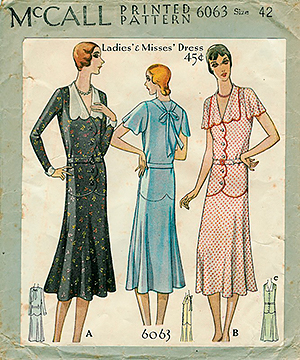
Bess hasn’t received the contest rules yet, but she’s already started planning her quilt, which she wants to reflect the theme “A Century of Progress.” While the quilt Bess is designing is one I concocted in my imagination, I took my inspiration from some quilts that were actually entered into the Sears Quilt Competition.
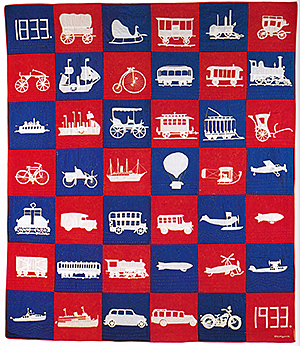
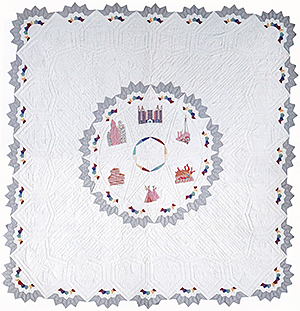
Bess makes a reference to Carrie Hall, one of our first quilt historians, perhaps best known today as the co-author (along with Rose Kretsinger) of The Romance of the Patchwork Quilt in America. Hall is famous as well for having identified and made over 850 quilt block patterns in an effort to preserve a historical record. She also gave lectures on quilt history, sometimes wearing a colonial dress when she presented. For a brief, but fascinating and pretty cool biography, go here: WOMEN’S WORK: Carrie Hall: Entrepreneur
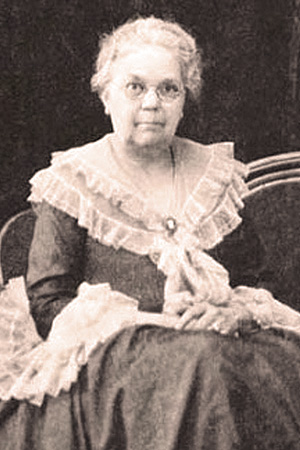
Author Notes
Last week a listener named Meg (who just happens to be a copy editor) caught an anachronism. In chapter 10, I have Emmeline reach into her desk drawer to grab a pen. But as Meg notes in her comment:
In 1933, she would most likely “grab” a pencil. The ubiquitous ball point pen didn’t get a patent until 1938 and was not commercially produced in the US until after WWII. Fountain pens were expensive and and relatively fragile and probably kept safely in a writing desk drawer to be used for letters and document signatures. Pencils, though, were very common. I know I’m being picky, but, hey, I’m a copy editor. : )
Thanks to Meg for pointing that out! I’ll be sure to make that change in the revision. If you catch anything that doesn’t seem quite right or an inconsistency in the plot, please let me know!
See you next week, when we’ll finally learn who knocked at Florence’s door at the end of episode 3!
